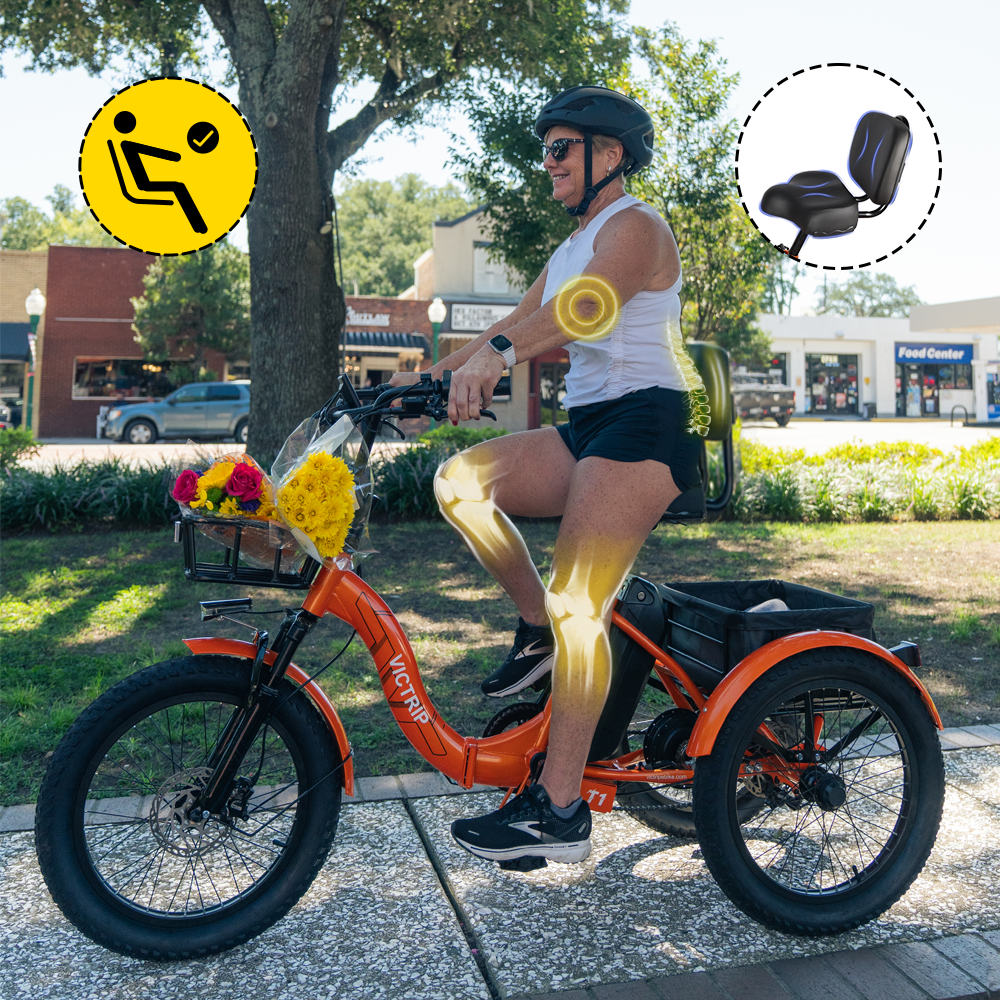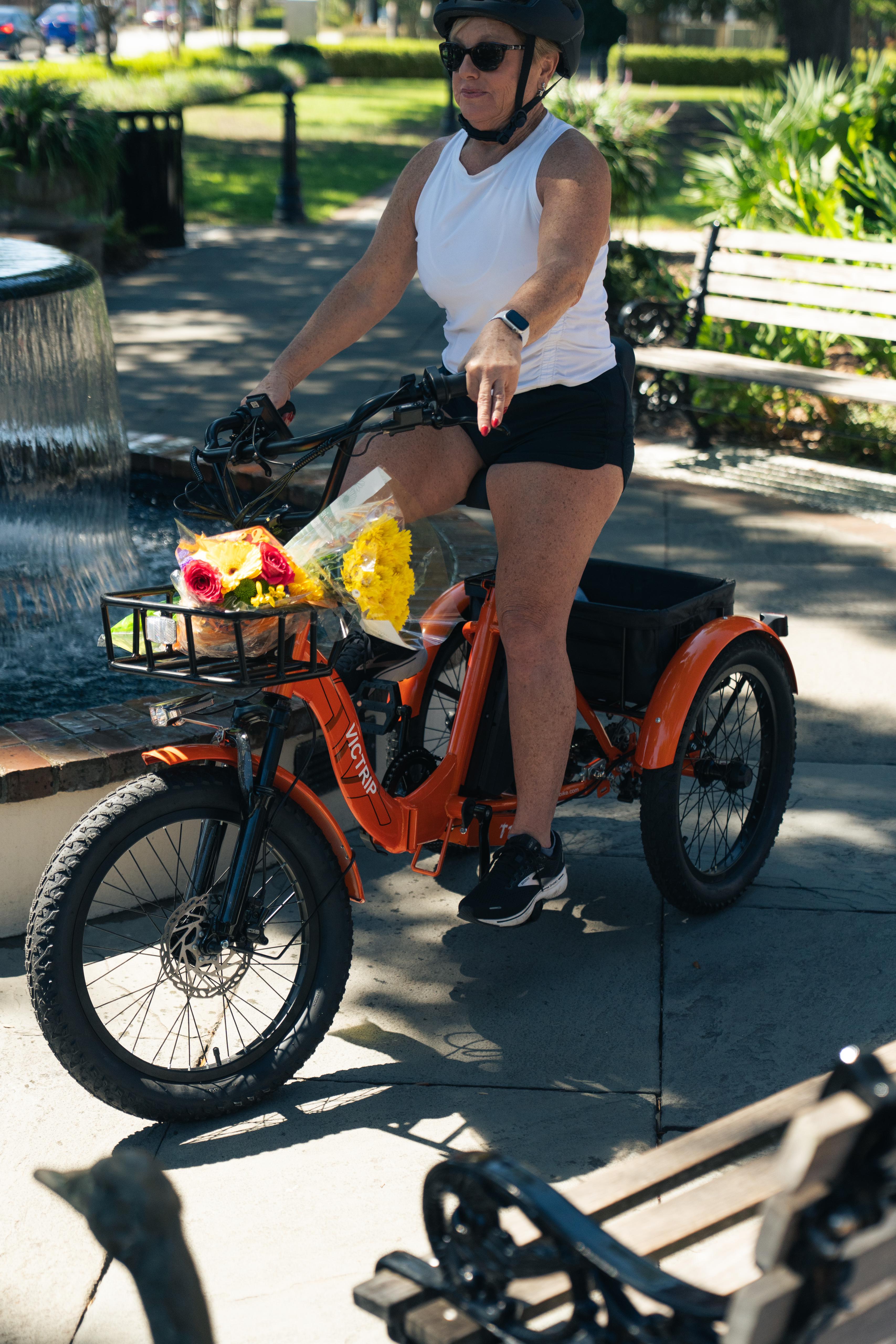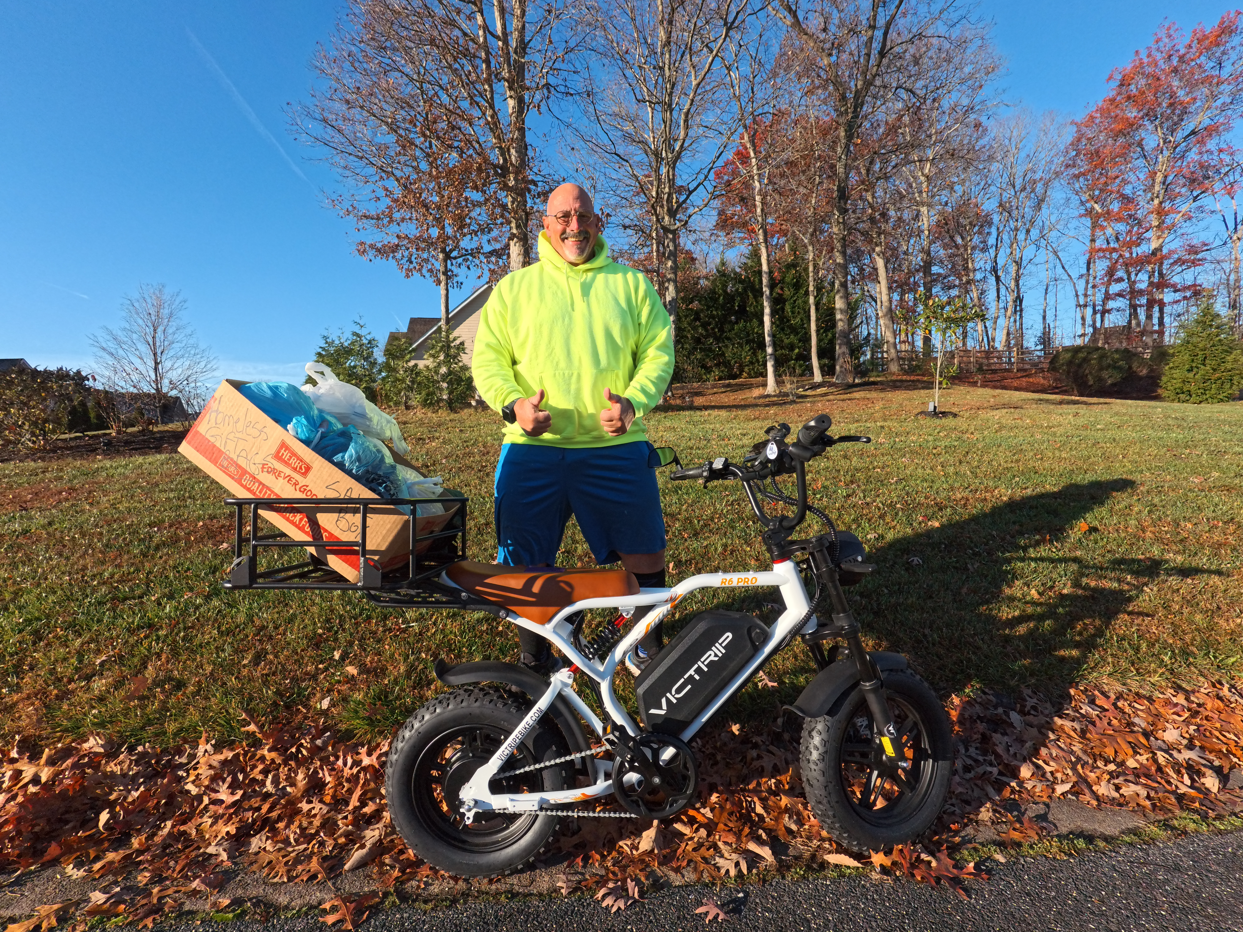
Mountain terrain is unpredictable. One minute you’re on a dry technical ascent; the next moment, a stream, a muddy chute, or a sudden thunderstorm appears. For riders who count on electric assist to extend their reach and enjoy steeper climbs, electronics that fail in wet conditions quickly turn an epic ride into an emergency.
That’s where waterproof electric bikes for mountain adventures earn their keep. They reduce the chance of electrical faults, keep key parts running in harsh conditions, and let you focus on riding rather than worrying about whether a puddle will kill the motor or battery. In short: waterproofing turns an e-bike into a dependable, year-round tool for exploration.
This article explains what “waterproof” really means for e-bikes, why it matters, what advantages it brings, and how to choose and care for a waterproof mountain e-bike so it keeps performing for years.
The Basics: What “Waterproof” Means for E-Bikes
Manufacturers use a couple of methods to describe water resistance. Knowing how to read these claims separates marketing talk from real protection.
IP Ratings and Real-World Meaning
The Ingress Protection (IP) code is the standard way to report resistance to dust and water. Common levels for e-bikes include:
-
IP54 — splash resistant (light rain and dust). OK for light trail use but not for deep puddles.
-
IP65 — resistant to low-pressure water jets; good for heavy rain and muddy rides.
-
IP67 — can tolerate temporary immersion (typically up to 1 meter for 30 minutes). This is solid protection for stream crossings and deep puddles.
In practice, aim for IP65 or higher if you regularly ride muddy trails, cross streams, or ride year-round.
Sealed Batteries and Connectors
A waterproof e-bike uses battery enclosures with strong seals and rugged connectors designed to keep moisture out. These packs often include:
-
Gaskets and O-rings at access points.
-
Potting or conformal coatings on sensitive electronics.
-
Waterproof charging ports or protective caps.
A properly sealed battery reduces corrosion and short circuits — two leading causes of e-bike failure in the field.
Motor Housing and Cable Management
Waterproofing isn’t only about the battery. Housings around hub or mid-drive motors must be sealed, and cable routing should avoid exposed junctions. Quality designs route cables internally or use sealed connectors to prevent water ingress where wires join electronics.
Advantage 1: Ride Confidently in Wet Weather
The number one benefit is confidence. When your bike is designed to handle moisture, you stop pausing at every stream and start picking lines that excite you. Wet weather becomes just another variable, not a reason to bail on a ride.
Practical upsides:
-
You don’t have to turn back if the forecast changes.
-
You can train consistently through seasons.
-
You’ll face fewer unexpected stops due to electrical faults caused by rain or spray.
Confidence translates directly into more riding time and better skill development over the year.
Advantage 2: Reduced Risk of Electrical Failures
Water and electricity don’t mix. On non-waterproof bikes, moisture can cause shorts, erratic motor behavior, or complete system shutdowns. Waterproof systems drastically lower that risk.
How this helps:
-
Less chance of a mid-ride power loss.
-
Reduced risk of corrosion on connectors and circuit boards.
-
More reliable pedal-assist behavior in challenging conditions.
Reliability is safety — a bike that behaves predictably helps you make smart decisions on the trail.
Advantage 3: Longer Component Lifespan and Lower Total Cost of Ownership
Sealing components from water means less corrosion, less grit ingress, and fewer premature failures. Over time, that adds up to real savings:
-
Batteries last longer when they’re not corroding or shorting on the inside.
-
Motors and controllers that stay dry need fewer repairs.
-
Frames and hardware keep a cleaner finish, preserving resale value.
So, while a higher-spec waterproof bike may cost more up front, the total cost of ownership (TCO) can be lower across years of ownership.
Advantage 4: Better Performance in Mud, Snow, and Streams
Wet or muddy conditions can sap performance on a poorly protected bike. Waterproof e-bikes sustain their output and control because their motor and electronics stay clean and dry inside their housings.
Benefits on the trail:
-
Motors maintain consistent torque delivery.
-
Drivetrain components resist clogging when paired with good seals and drainage.
-
Braking sensors and electronic assists remain responsive when sprayed with mud or melting snow.
A strong example is the VICTRIP SURNAT N12, designed with sealed components that handle deep mud and wet trail systems without compromising motor output or rider safety.
That means you can commit to a line or a climb without fearing the electrical system will cut out.
TOP PICK

VICTRIP®SURNAT N12 2000W Electric Bike
Advantage 5: Lower Maintenance Time and Costs
A waterproof design reduces the number of reactive repairs you’ll need. While regular maintenance is still vital, you’ll likely see fewer emergency trips to the shop for water-induced issues.
Practical examples:
-
Sealed connectors mean fewer flaky electrical problems to diagnose.
-
Water-resistant batteries need fewer internal checks for moisture damage.
-
External cleaning is simpler — hose off the bike and dry it properly without fearing internal damage.
Less downtime equals more riding — and that’s the point.
Advantage 6: Improved Safety and Consistent Braking
Safety gets a direct boost from waterproofing. When electronics controlling assist modes, power cutoffs, or regenerative features stay reliable in wet conditions, you’re safer.
Key safety gains:
-
Electronic cutoffs are less likely to fail due to moisture.
-
Brake sensors and motor inhibitors remain consistent, preventing accidental power surges.
-
Lighting and display electronics keep working, which is crucial in storms or low visibility.
Consistent systems help riders maintain control and make better split-second choices on technical terrain.

Advantage 7: Higher Resale Value and Market Appeal
A well-maintained waterproof e-bike is attractive to buyers. The reasons are simple: perceived durability, verified protection (IP rating), and fewer visible signs of wear.
Brands such as VICTRIP Ebikes have recognized this demand by integrating waterproof components across their mountain-focused lineups, giving riders the confidence of long-lasting performance as well as strong resale potential.
Buyers pay premium for:
-
Bikes with certified ingress protection.
-
Properly sealed battery packs and original charger systems.
-
Clear maintenance records showing no water damage.
That makes waterproofing an investment that preserves value when you decide to upgrade.
Advantage 8: Environmental Upside — Less Waste, Fewer Replacements
Long-lasting components equal less waste. When batteries, motors, and electronics survive longer thanks to effective sealing, fewer parts are thrown away. That reduces the environmental footprint of owning an e-bike.
How waterproofing helps sustainability:
-
Fewer part shipments and repairs over time.
-
Reduced resource use for replacements.
-
Potential for longer product lifecycles and better second-hand markets.
Choosing a durable, well-protected e-bike is a small but meaningful way to reduce environmental impact.
Advantage 9: Planning Longer Routes with Confidence
With predictable electronics and protection from moisture, route planning becomes bolder. You can plan longer rides that include river crossings, lower-trail sections after rain, or higher-altitude passes where weather changes fast.
Practical outcomes:
-
Less risk of being stranded due to unexpected failures.
-
Better power management during long rides because battery performance stays predictable.
-
More flexible logistics: you can commit to remote support points knowing your bike will likely make it.
That fosters exploration and autonomy on multi-day or remote rides.
Advantage 10: More Riding Days — Expand Your Season
Weather is a big limiter for many riders. Waterproof e-bikes expand the calendar. You’ll ride in spring mud, late autumn rain, and mild winter conditions without the fear that a bit of water will ruin the electronics.
Seasonal benefits:
-
More consistent training and enjoyment.
-
The ability to take advantage of off-peak trail conditions.
-
Less gear swap pressure — you don’t need a separate “bad weather” bike.
More days on the bike means better fitness and more satisfaction from ownership.
What to Look For When Buying a Waterproof Mountain E-Bike
When shopping, don’t accept vague claims. Look at specific features and specs.
IP Rating Targets
Aim for IP65 or higher for real trail durability. If the manufacturer only says “waterproof” without a rating, ask for test results or user reports.
Battery and Charger Design
-
Sealed battery packs with rubber gaskets.
-
Covered or waterproof charging ports.
-
Chargers that match the battery’s IP expectations (some chargers are not waterproof and require careful storage).
Motor Type and Seals
-
Mid-drive motors are easier to protect in some builds; hub motors can also be well protected if sealed correctly.
-
Look for motor housings with minimal seams and verified seals.
Frame, Drainage, and Cable Routing
-
Internal cable routing reduces exposed connectors.
-
Drainage channels or small relief holes (placed so water drains clear of electronics) help prevent trapped moisture.
-
Avoid designs with external junction boxes unless those boxes are rated and sealed.
Maintenance Checklist: Keeping a Waterproof E-Bike Truly Protected
A waterproof bike still needs care. Regular checks keep seals effective.
Basic checklist:
-
After wet rides: rinse off mud and salt, then dry the bike thoroughly, especially connector caps.
-
Inspect gaskets and rubber seals for cracks every three months.
-
Keep charging ports covered and use dielectric grease on connectors if recommended.
-
Replace worn O-rings or seals immediately.
-
Store batteries in a dry, moderate-temperature place — waterproofing doesn’t mean you can store a battery in a puddle.
Small habits increase longevity dramatically.
Field Repair Tips and Emergency Fixes
If something goes wrong on the trail, stay calm and use these tips:
-
Carry a basic waterproof tool kit with spare fuses, sealed electrical tape, zip ties, and insulated multi-tool.
-
If a connector gets wet, dry it with a clean cloth and leave protective caps in place; avoid powering the system until connectors look clean.
-
For suspected battery issues, remove the battery and keep it warm and dry; do not attempt to charge a visibly damaged pack.
-
If the display goes dark, check the main power switch and battery seating; sometimes a jostled connection is the culprit.
Knowing how to handle simple issues gets you home safely without costly emergency services.
Conclusion: Make Waterproofing Part of Smart Riding
If you ride mountains and want fewer worries about the weather, investing in a waterproof electric bike for mountain adventures is a smart move. Waterproofing improves reliability, extends component life, raises resale value, and most importantly, gives you the freedom to explore more often and farther.
Remember: look for real IP ratings or verified design features, maintain seals and connectors, and treat waterproofing as one part of a broader maintenance routine. Do that, and you’ll get more fun, fewer repairs, and more confidence on every muddy climb and rainy descent.
FAQs
Can I ride through deep water with an IP67 e-bike?
IP67 typically allows temporary submersion up to about 1 meter for 30 minutes. That covers shallow stream crossings but not prolonged submersion. Avoid intentionally dunking the bike; IP ratings are for accidental or temporary exposure.
Does waterproof mean maintenance-free?
No. Waterproofing reduces risk but doesn’t eliminate the need for maintenance. Seals degrade over time, and mud or salt can still damage bearings or exposed metal parts.
How do I know if my battery seal is still good?
Inspect for visible gaps, cracked gaskets, or corrosion at terminals. If the battery has been opened or dropped, have it checked by a certified technician.
Will waterproofing affect motor cooling?
Some sealing strategies can slightly impact passive cooling, so manufacturers balance sealing with heat management. Good designs accommodate both by using sealed housings that still dissipate heat effectively.
Can I hose down a waterproof e-bike at high pressure?
Avoid high-pressure washers near seals and bearings. Use a gentle hose or bucket rinse and a soft brush. High pressure can force water past seals.




Share:
Pedal Assist Electric Bike Health Benefits Backed by Science
Electric Bike Care and Charging Tips